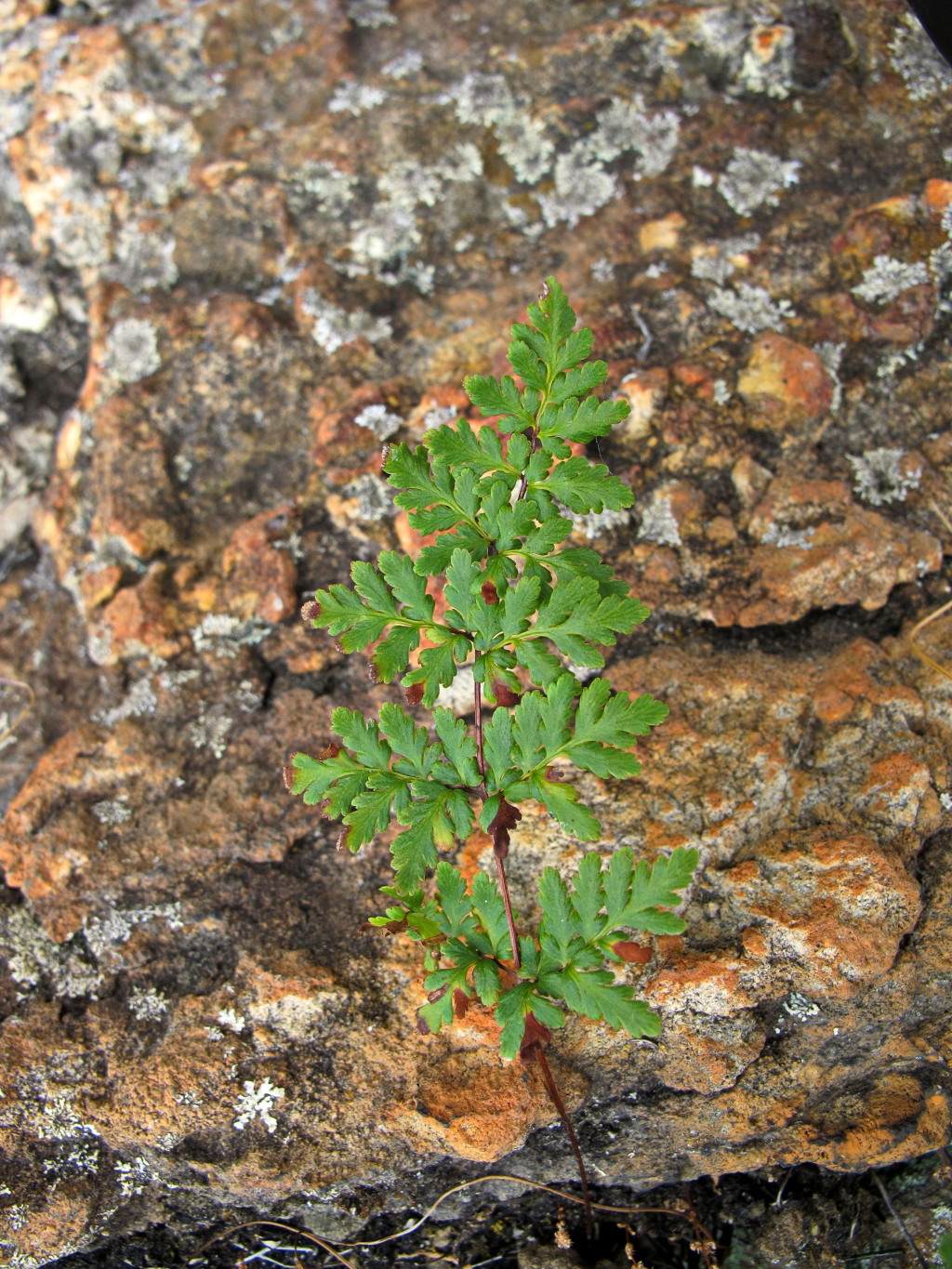Cheilanthes sieberi subsp. sieberi
Narrow Rock-fernRhizome short, creeping or semi-erect; scales narrow, pointed, with dark, central stripe when mature. Fronds clustered near tip of rhizome, variable in size, stiffly erect; fertile fronds 5- 40 cm tall, 2–3 (rarely 5) cm wide at broadest point; sterile fronds less than 10 cm tall, rarely found. Stipe shorter or longer than lamina, fine, brick-red to brown, bare except for a few scales at base. Lamina narrow, oblong to ovate, mainly 2-pinnate (but a few lower pairs of primary pinnae may be once more divided) mid-green to dark green; rachises and midvein undersurface with scattered multicellular hairs, some very short, appressed and glandular, and few scales. Pinnae well separated along rachis, short; pinnules deeply lobed with short terminal segments. Sori partly enclosed by deeply reflexed margin of each small lobe of pinnule; spores spherical, black.
LoM, MuM, Wim, VVP, VRiv, RobP, GipP, OtP, Gold, CVU, GGr, DunT, NIS, EGL, EGU, HSF, HNF, MonT, VAlp. All States. New Zealand, New Caledonia. Grows vigorously in rock crevices and depressions, and although sometimes coextensive with Cheilanthes austrotenuifolia, C. sieberi is usually in drier sites with shallower soil.
Young fronds with curled lobes resemble a row of tiny clenched fists. Cheilanthes sieberi subsp. pseudovellea H.M. Quirk & T.C. Chambers (1983) from central Australia differs from the type variety in having a covering of fine white hairs on both sides of the lamina and sometimes the stipe. It is similar to Cheilanthes lasiophylla Pic.Serm., differing in the morphology of the scales and hairs which are branched in Cheilanthes lasiophylla.
Entwisle, T.J. (1994). Ferns and allied plants (Psilophyta, Lycopodiophyta, Polypodiophyta). In: Walsh, N.G.; Entwisle, T.J., Flora of Victoria Vol. 2, Ferns and Allied Plants, Conifers and Monocotyledons, pp. 13–111. Inkata Press, Melbourne.
 Spinning
Spinning



